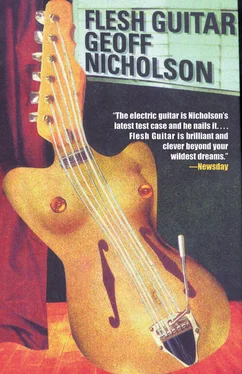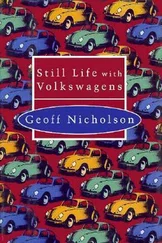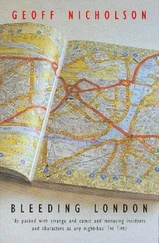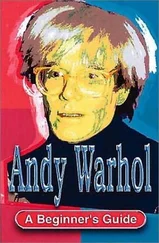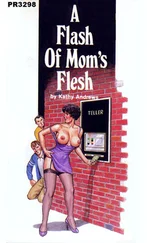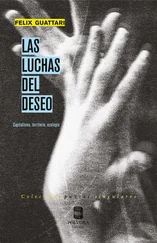‘Hey,’ he says between bursts of laughter, ‘you know there’s not much you can tell me about death. I’ve played the Wolverhampton Gaumont. I’ve been on tour with the Walker Brothers and Engelbert Humperdinck. Hey, I think there’s a song in that, if I could just get this guitar in tune, if I could just get a piece of paper. If I could just wake up.’
Suddenly the room looks dark and he feels all alone. Wasn’t there something she was supposed to ask him? His advice for the aspiring guitarist. He has no answer. He knows it has to do with blackness and anger and sex and violence and Vietnam and the ghetto and, yeah, well maybe it’s as well she didn’t ask. He can tell there are going to be no more songs, no more jams, no guitar solos. Bile wells up in his throat, vomit comes heaving up from his stomach, fills his mouth, his nose, his very being. When he wakes up next morning he finds himself dead.
So the film got made. They kept changing the title. It went from Pluck! to Twang! to Valley of the Plank-Spankers, compromising with the rather dour title Plec. They did a lot of test screenings, messed around with the ending, unable to decide whether the climax should be the heat death of the universe or a song-and-dance number, finally choosing the latter.
Responses were surprisingly good. ‘Cool to the max,’ was the most frequent comment from white middle-class youth in the cineplexes. A review on the Internet said it was a ‘string-driven masterpiece’. The London Daily Telegraph called it a ‘spirited, youth-orientated extravaganza’. None of these sources said anything at all about the way the actors held their plectrums.
But these were amateur opinions; for a more specialized and authoritative opinion one would naturally have to turn to the Journal of Sladean Studies.
Review of Plec by Bob Arnold
The opening scene says it all. We’re in a plectrum factory, a sweatshop, somewhere in the Third World, somewhere cheap, clean and super-efficient. White-coated workers stand by as gigantic, soulless machines stamp out plectrums by the million. The camera moves along the production line and we see the little plastic suckers being sorted, separated, boxed, despatched. This is a far more significant sequence than the film-makers know. It sets exactly the right tone for a movie that is mechanical, soulless and far too neatly packaged.
Wiser critics than I have raised doubts about the wisdom of selecting the plectrum as a suitable subject for a high-budget three-hour mass-entertainment movie. If the idea sounds tired and jejune, then in Howie Howardson the producers have found a director who was perfectly in tune with the material.
Following the factory sequence we’re immediately plunged into Greek antiquity, Lesbos year zero to be precise. Classical scholars may find much to intrigue them here, but for the rest of us it’s the nude swimming and dancing sequences that are more likely to grab the attention. Those ancient babes sure knew how to do a lot with a little.
The casting of Sappho was always going to be tricky, and Helen Mirren battles gamely with the role without being utterly convincing. Similarly Eddie Murphy does his best with Henry VIII, but his best just isn’t good enough. Some of the cast wrestle bravely with their roles, but they all find themselves pinned to the canvas by a lame, witless, anachronistic script. Other members of the cast don’t even seem to be trying. Robert De Niro’s depiction of Johnny ‘Guitar’ Watson suggests that he knows nothing about guitar playing, the blues, or indeed human life on earth.
Strange as it seems, however, especially to me, the one performance that’s oddly affecting is that of Trixie Picasso as the young Joan Jett. The scene when her vicious music teacher (edgily played by Dennis Hopper) makes her turn out her pockets and then mocks the presence of the plectrum sent several tears running down my usually poker face. It’s a moment that’s almost worth the price of admission on its own, but not quite.
As for Jenny Slade’s involvement, well, the actors’ plectrum technique is fine, certainly better than their acting technique. If anything Megan Floss looks more at home with a plectrum than Patti Smith ever did. On the other hand, Michael Cutlass’s macho posturings with a jumbo acoustic suggest that his real instrument is probably the claw hammer.
But you don’t have to be Jenny Slade’s number one fan to feel that her talents are utterly wasted on this farrago. Why oh why didn’t they ask her to write the music, or even have her appear in the film?
Such music as there is comes courtesy of Tom Scorn. His soundtrack is a mess of bass and drum loops, samples, treated vocals and dodgy retro synths. To add insult to injury, acute listeners will be able to spot a sample from Jenny Slade herself (way back in the mix, uncredited, and no doubt unpaid for), which is used in the Link Wray, speaker-piercing sequence. I hope she sues Scorn and the film’s producers for everything they’ve got, although having made this piss poor movie one suspects and indeed hopes that they’ve got very little.
Journal of Sladean Studies
Volume 9 Issue 2
DEATH AND THE PERCUSSIONIST
Death walks with the guitar player. It is there leaning over her shoulder as she changes strings. It is there lurking behind the PA stacks, or surfing in over the heads of the audience. Death leaves its thick perfume in stinking dressing rooms, in musty, unopened flight cases. Sometimes it is indistinct, unfocused, as unformed and shapeless as a forty-five-minute blues jam, but other times it shapes up, gets its act together, does the business.
Jenny Slade used to say she wished she could have been there on 26 November 1973 when John Rostill of the Shadows was found in his own studio apparently electrocuted by his guitar. The coroner returned an open verdict, but Jenny didn’t like things to be that open. She wanted to close the case, to know the full story. Rostill was not the only one. Keith Relf, of the Yardbirds, he too was found dead at home clutching a live guitar, and he didn’t even consider himself a guitarist.
But death likes to get away from home, to go on the road, to get on the bus and tour. It has a sense of the big occasion, an unfailing grasp of showbiz. Death enjoys playing to the gallery. All sorts of players, from Gary Thain of Uriah Heep to Bill Wyman and Keith Richards, have received monster electric shocks on stage, but they all survived. However, death really put on a show on 3 May 1972 with Les Harvey, guitar player in Stone the Crows. He was electrocuted live on stage in front of an audience of 1200 at the Top Rank, Swansea. You can’t follow that.
These deaths which are so appropriate, so fitting, so electric, can make the more usual musicians’ deaths seem positively tame and beside the point. Drink, drugs, choking on vomit, plane crashes, Aids, even blowing your own head off, somehow they lack the mythic structure of a death that comes to you direct through the very medium that makes the music possible.
And at least it’s quick. If nothing else, an early death must surely save you from a long, slow, lingering one. It may not simply be a question of rusting or fading but rather of lasting long enough to fall prey to the old horrors, the old men’s illnesses. But few have suffered so badly or so early as Jon Churchill who was diagnosed as suffering from Alzheimer’s disease when he was barely forty-five years old.
Jon had started out as an exceptionally youthful jazz and big band drummer, but he was young enough and smart enough to reinvent himself as a rock and roller by the time of the Beatles and sixties beat groups. He was much in demand as a session man and though he was too cool ever to name names, he never denied the rumours that he was the drummer on twenty or more Merseybeat hit singles. This despite his having been born and raised in Great Yarmouth.
Читать дальше
